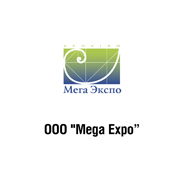“Marine Industry of Russia”
«President-Hotel»
Department of affairs of the President of the Russian Federation
Moscow, 24, B.Yakimanka Str
24-25 May 2017
May 07, 2015
Greetings from the Ministry of Industry and Trade of the Russian Federation
January 28, 2015
The Forum organizers received the greeting from Gutenev V.V., the First Deputy Chairman of the Russian Engineering Union.
January 15, 2015
The Government of the Russian Federation addressed a welcome letter to the V International Forum Marine Industry of Russia.
More on ship electric equipment
Ship electrical facilities is a complex of instruments and devices for energy conversion and transmission. This complex is formed by transformers, transducers, terminal boxes, various cables, wires, electromechanical, electrical and electronic control, monitoring and protective instruments, regulators, lighting and heating devices, etc.
In view of pattern of utilization, ship electric facilities must meet a number of requirements, including small dimensions and weight, increased strength and improved insulation, upgraded vibration, humidity, salt, and water entry protection. All equipment is to meet GOST R 51683-2000.
Generators
AC or DC generators as well as accumulators are used as onboard power systems. Generators could be diesel, shaft-driven, and turbo generators; and by purpose they can be classified into main, harbor, back-up and emergency generators.
Diesel-generators consist of a generator itself and diesel, turbine generators – of a turbine and generator. Shaft-driven generators work on power take-off of the ship power plant.
Diesel generators are very efficient, independent and stand-alone, but they have small service life.
Steam turbo generator efficiency is less and they need steam pressure maintenance even at no load having, at the same time, smaller weight and dimensions as well as larger service life.
Gas turbine generators have advantages both of a steam turbine (small dimensions, weight and large service life) and of diesel generators (independence) but they lack economical operation.
Since shaft-driven generator speed as well as repeatable accuracy of current output characteristics are in direct relation with ship speed, shaft-driven generators are installed at ships which MSPP does not often changes its running regime. With application of diesel and turbo generators used as auxiliary SPP, their fuel consumption lowers and service life grows.
Back-up generators are designated for replacement of disabled main generators. An emergency generator ensures operation of the main ship systems in case of complete failure of the main SPP (i.e. main and back-up generators).
Generally, accumulators as main power supplies at small ships, and as emergency and back-up power supplies at large ships. Recently, lithium batteries added to acid and alkaline accumulators.
Transformers
At ships the following transformers are used:
- potential transformers (for transformation of high voltage into low in relay protection and emergency control and measuring circuits);
- current transformers (alteration of primary current parameters into necessary value);
- isolating transformers (power supply safety improving and electrocorrosion prevention);
- mains transformers (energy transformation in installations and mains), etc.
Electric energy transducers deserve special focus. Today, high frequency AC and DC transduction methods are used. Despite complicacy of transduction according such method, use of application-specific integrated circuits ensures not only high reliability of such units but their cost.
Electricity Distribution Plants
Protective, commutation, measuring, and alarm devices installed at special-purpose metallic structures are electricity distribution plants of the ship electrical network.
They are used for electrical circuit disconnection and connection, their status check, various parameters measuring, etc. They can be:
- ship general distribution board;
- distribution boards (DB);
- consumer terminal boxes (CB);
- control panels;
- control boxes, and
- special-purpose devices.
Ship electrical network is a network of conducting cables laid to minimize possibility of its failure. Ship cables can have various sheaths (from rubber and varnished insulating fabric to flux coating). Besides, metallic armor braiding should protect cables form mechanical damage. Cable and its make-up selection depends on numerous conditions, such as sensed current, cable location, etc.
Apart from the above, ship electric installations also include systems and units of:
- electric protection;
- diagnostics;
- control;
- automatic operation;
- reactive power compensation;
- electric power supply of communications-electronics equipment;
- power filters;
- current limitation devices;
- various sockets and inputs;
- junction boxes;
- heating and lighting facilities, etc.
Current Situation and Outlooks
Ship electric equipment is permanently improving. Energy quality factors, reliability, large service life as well as weigh and dimensions are relevant for them. Today, module system development ensuring redundancy of main units and parts are on the front burner. This way, reliability is improved as well as repair and current maintenance time is decreased.
LED illuminators are one of the achievements of lighting equipment manufacturers. Many companies manufacture navigation lights on their base. Application of such facilities help save energy (energy consumption of a LED illuminator is by one order lower comparing to traditional incandescent lamp) with the same or greater brightness. Besides, service life of LED illuminators is much more than that of incandescent lamps, they are shock, push and vibration resistant, and can be hermetic.
Domestic electric facilities are not bad. Devices meeting the most perfectionist requirements are designed and produced in Russia. Their main shortage is specific consumption of materials which means relatively large weigh and dimensions.
© Marine Industry of Russia, 2009-2010. All rights reserved.
By: “Ideological buiseness-projects”
Design by Valentina Ivanova.








